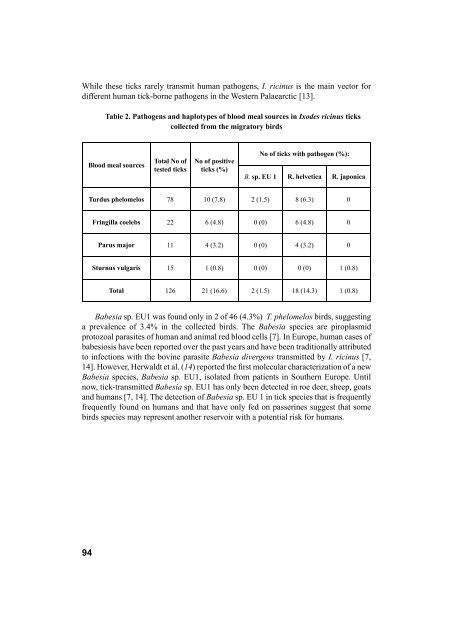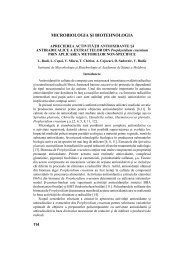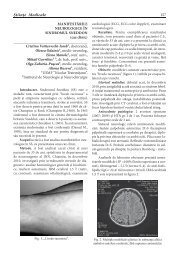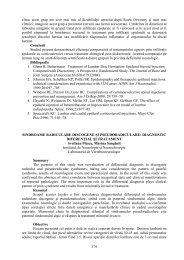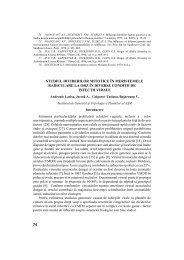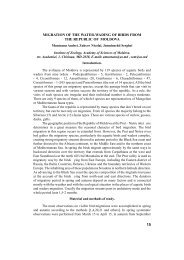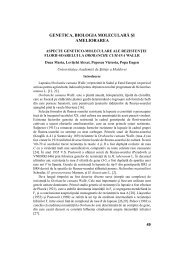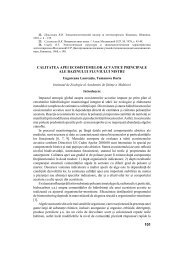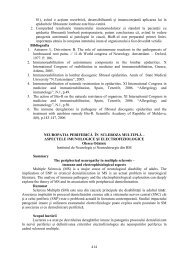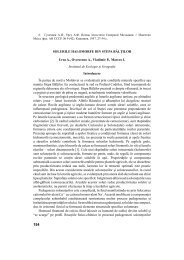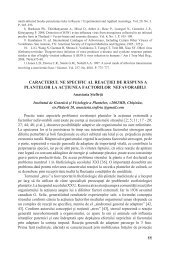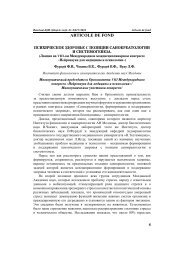198 CUPRINS
198 CUPRINS
198 CUPRINS
You also want an ePaper? Increase the reach of your titles
YUMPU automatically turns print PDFs into web optimized ePapers that Google loves.
While these ticks rarely transmit human pathogens, I. ricinus is the main vector for<br />
different human tick-borne pathogens in the Western Palaearctic [13].<br />
94<br />
Table 2. Pathogens and haplotypes of blood meal sources in Ixodes ricinus ticks<br />
collected from the migratory birds<br />
Blood meal sources<br />
Total No of<br />
tested ticks<br />
No of positive<br />
ticks (%)<br />
No of ticks with pathogen (%):<br />
B. sp. EU 1 R. helvetica R. japonica<br />
Turdus phelomelos 78 10 (7.8) 2 (1.5) 8 (6.3) 0<br />
Fringilla coelebs 22 6 (4.8) 0 (0) 6 (4.8) 0<br />
Parus major 11 4 (3.2) 0 (0) 4 (3.2) 0<br />
Sturnus vulgaris 15 1 (0.8) 0 (0) 0 (0) 1 (0.8)<br />
Total 126 21 (16.6) 2 (1.5) 18 (14.3) 1 (0.8)<br />
Babesia sp. EU1 was found only in 2 of 46 (4.3%) T. phelomelos birds, suggesting<br />
a prevalence of 3.4% in the collected birds. The Babesia species are piroplasmid<br />
protozoal parasites of human and animal red blood cells [7]. In Europe, human cases of<br />
babesiosis have been reported over the past years and have been traditionally attributed<br />
to infections with the bovine parasite Babesia divergens transmitted by I. ricinus [7,<br />
14]. However, Herwaldt et al. (14) reported the rst molecular characterization of a new<br />
Babesia species, Babesia sp. EU1, isolated from patients in Southern Europe. Until<br />
now, tick-transmitted Babesia sp. EU1 has only been detected in roe deer, sheep, goats<br />
and humans [7, 14]. The detection of Babesia sp. EU 1 in tick species that is frequently<br />
frequently found on humans and that have only fed on passerines suggest that some<br />
birds species may represent another reservoir with a potential risk for humans.


